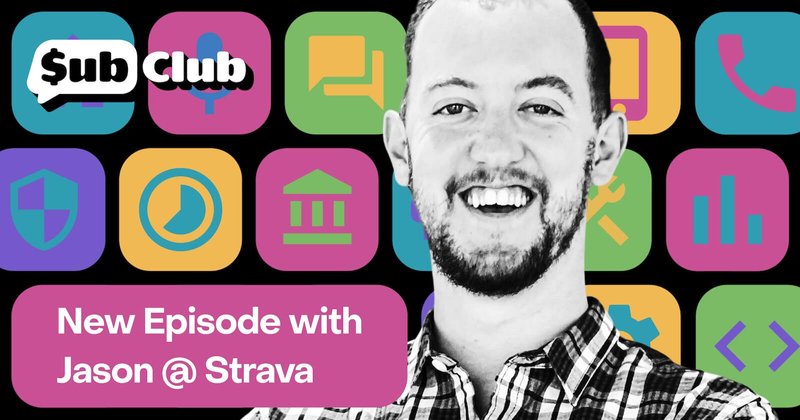Lessons from building a 70-person growth team — Podcast with Strava’s Jason van der Merwe
You know as well as we do that running an app business is chaotic. In this podcast, learn how to embrace the chaos like Jason van der Merwe.

As a growth engineer, are you thinking like a product manager?
Strava Director of Growth Engineering Jason van der Merwe thinks you should be. In this episode of the Sub Club podcast, me and Jacob Eiting discuss how Jason scaled Strava’s growth team from zero to five cross-functional teams totalling over 70 people.
What exactly is growth engineering?
Growth engineering is already well-established at larger companies, but it’s gaining momentum for a lot of app companies. But what is it exactly? “Growth teams’ goal is to connect users with the value of your product, and to continue to expand that value,” Jason explains.
While sports community app Strava has benefited from a lot of organic growth, “managed chaos” has been Jason’s philosophy coming in — along with a lot of testing. In fact, Jason believes you should be testing as many ideas as possible. That’s how the biggest growth wins come about.
Part of this is “an orientation on user and business impact at the end of the day,” Jason highlights “versus just delivering something you were told to deliver.” It requires a fundamental rewiring to switch from being an engineer to embracing the role of a cross-functional user-focused product manager. And sometimes, you might even need to break the rules.
Running tests is the key to growth
When Jason started with Strava, the company had a new user activation team. He knew — like other companies that focus on new user optimization — that running tests was key to growth. That’s where the big wins come from. One early experiment involved reducing friction for users, which ultimately increased retention — one of Strava’s biggest wins. So much of what has followed for Strava can be traced back to the fundamentals of that initial success.
How RevenueCat Experiments can help: Price testing for mobile apps >>
As the team grew, the focus on single big experiments waned — which meant more focus could be given to solving specific problems. But as a result, you need to be extra conscious of not losing sight of the bigger picture. You need to retain the key insights and learnings from across every team.
Feature education is crucial
Most Strava employees use the product daily, which is a gift and a curse. On the one hand, you’ve got experience with the product. But then you need to be able to engage with the product from the perspective of new users — which is a tough balancing act.
As a result, feature education involves tool tips, push notifications, emails — as many different channels as possible — to balance the internal chaos which every app company faces (even if it doesn’t always look like it). Even without perfect observability, being willing to keep moving forward and making decisions is admirable.
Explore the topic further: How to optimize subscription apps with CRM >>
On the podcast, Jason also talks about core values for different teams and why viewing yourself and your teams as platforms helps to optimize and deliver user experience.
You might also like
- Blog post
How to use pricing research to price your app effectively
Three proven pricing research methods to guide your strategy
- Blog post
Building sustainable growth loops and lasting habits — Anton Derlyatka, Sweatcoin
Sweatcoin turned walking into a currency - but its real success comes from engineered virality and habit-forming design.
- Blog post
Daily Sub Club minisodes leading up to the State of Subscription Apps 2025
Bite-sized insights from top app operators - dropping every day until the full report launch

